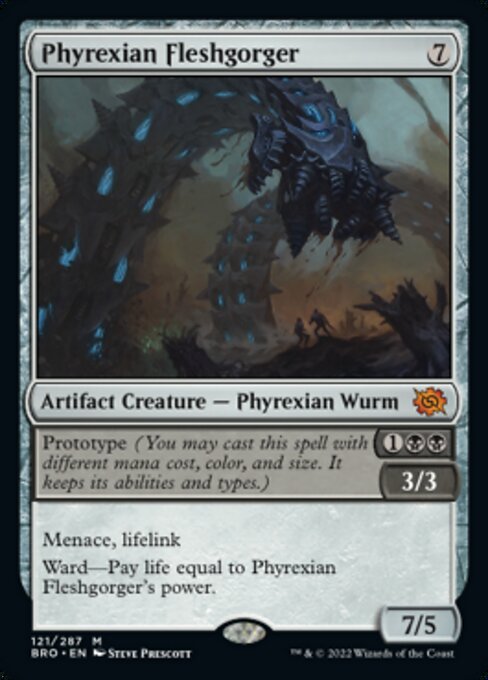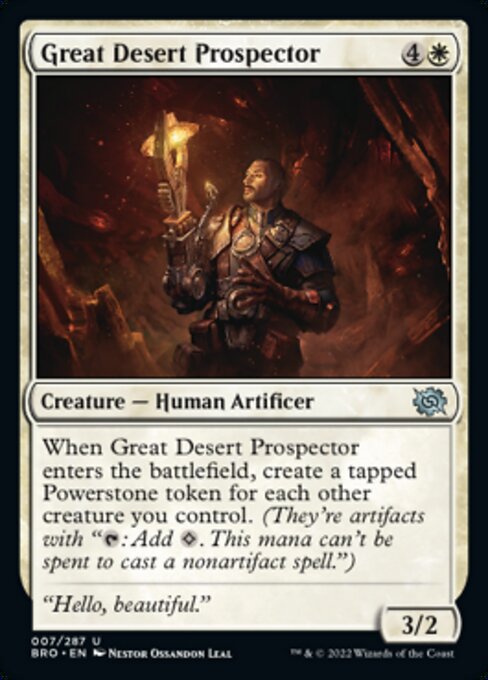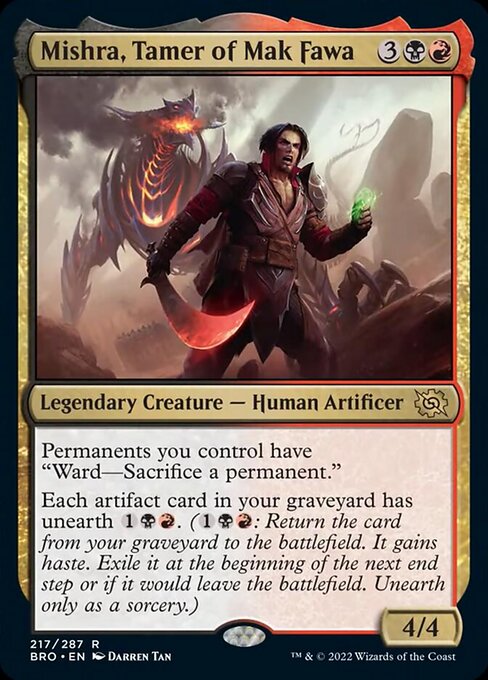Magic’s newest expansion has us journeying once more to what many consider the home of Magic, Dominaria, to see one of the games’ earliest and most iconic stories through fresh eyes. A new set means new mechanics, and we’ve got some good ones as well as some returning ones. In this article we’ll talk about the mechanics and offer some thoughts on what they mean for Commander and how they’ll play.

Prototype
Prototype is a new ability found on artifact creatures to represent the continued development of these horrifying engines of war. When you cast it, you choose which of the two sets of characteristics you want, and pay either the regular or Prototype cost. The abilities of the card will be the same no matter which one you pick.
FromTheShire: Prototype follows a long tradition of ‘pay a smaller cost for a lesser effect’, and these have always been useful. This iteration reminds me of Evoke, but instead of sacrificing the creature immediately you just get a smaller body, which is excellent.
BPhillipYork: I think it’s a great mechanic, Prototype helps smooth out decks and eliminates some of the most unfun play in Magic, when you just can’t do anything because you drew cards that cost way too much or way too little or lack land. I also like that it enables blink and reanimation strategies. Seems really solid for Standard and Limited play, I don’t see it having too much impact on Commander other than enabling something to see play which otherwise wouldn’t.
TheChirurgeon: These give you a lot of versatility on big creatures and most of them are worthy inclusions in draft. That they gain colors at lower costs is interesting and a bit weird for play purposes but on the whole I think these are going to see play at pretty much every level, and the synergy with blink effects to “steal” a bigger version of the creature is just icing on the cake.

Powerstones
Powerstones are a new token type, colorless artifacts that thrum with power and tap for mana, explaining why both brothers covet them to power their infernal machines. The mana can’t be used to cast nonartifact spells, but they can be used for activated or triggered abilities, to pay costs, to cast artifacts, and so on.
FromTheShire: Obviously creating a bunch of mana rocks is extremely powerful, even if you are mildly limited in how you can use them. Especially within the set, this is barely a drawback, plus there a bunch of things in Commander that care about how many artifacts you have, and you can up your count pretty aggressively with Powerstones.
BPhillipYork: I haven’t seen really a lot of compelling uses for Powerstones. They’re neat, and they play well with cards like Urza, Lord Higher or Galazeth Prismari, and there are decks with lots of activated abilities, or just Thrasios, and they could be useful in those scenarios. They’re also nice for decks which do a lot with artifacts or combo off with them, running things like Unwinding Clock or Clock of Omens, you know clock tribal decks.
TheChirurgeon: Probably smart to only have them enter the battlefield tapped for power purposes and that also prevents some of the more degenerate scenarios from playing out. Otherwise yeah, they’re just more artifact tokens so anything you were already able to do with gold/treasure tokens is pretty much also in play with these.

Unearth
Unearth is a returning mechanic that can be used to temporarily return creatures to the battlefield, though it has been expanded slightly to some non-creature artifacts as well in this set.
FromTheShire: It’s sweet to see Unearth back again, I’ve always liked reanimation and the built in tension with bringing something back at just the right moment, knowing it’s not going to stick around is great.
BPhillipYork: I like Unearth, it’s a useful mechanic and plays well with bury to grave and rummage/loot strategies. There are Dauthi Voidwalkers everywhere though so it’s a bit dangerous to rely on now.
TheChirurgeon: I’ve always seen Unearth as more of a support for an aggro strategy – a way for aggro decks in the red/black space to recycle creatures late-game when they’d otherwise be running out of gas. It’s a great mechanic, but I’m interested to see how it plays more in Brothers’ War, where it’s playing out on artifacts, which tend to be less efficient from a power-to-cost ratio, though there are a couple of options which may get there.

Meld
Meld returns in a limited form for three of the big players in the set, Mishra, Urza, and Titania, allowing you to combine two specific cards into a third giant permanent.
FromTheShire: Oh meld. You’re so very cool in theory, and so very difficult in practice. That being said, I think Wizards has picked three excellent characters that make sense for why they should meld, and the thing that triggers it makes perfect lore sense as well. As someone who owns a ton of the old Magic novels and has been super in to this story line for forever, I definitely can’t wait to have fun trying and failing to pull it off in my games.
BPhillipYork: Meld is a big dumb mechanic and I think it’s fun and goofy. So I like it. Psyched to see some obvious meld commanders that actually work. Can absolutely see making a Mishra meld deck. Though it probably won’t be that uncommon.
TheChirurgeon: I have never actually pulled off meld in a game but this makes sense as the only way to actually get Urza into a card, given just how big and powerful he’s meant to be in the lore. Likewise, Mishra is very cool as well. It’s a really cool way to do these, even if the mechanics are just kind of OK.
Next Time: The Set’s Multicolor Cards
That wraps up our look at the mechanics of The Brothers’ War. We’ll be back later to look at the most noteworthy cards in the set, starting with the multicolor cards in the main set, then in the following articles we’ll cover monocolor and colorless cards before moving on to the set’s Commander decks. As always, if you have any questions or feedback, drop us a note in the comments below or email us at contact@goonhammer.com.


